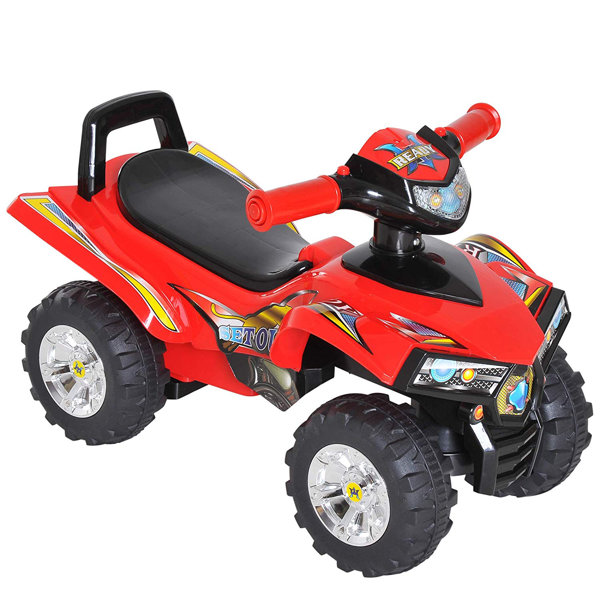Recommended News To Selecting Remote Control Childrens Cars
Wiki Article
What Do I Need Know About Battery Life And Charging Time Of An Electric Ride-On Kids Car?
It is crucial to know the life span of your battery for the electric ride-on vehicle for children and how long it takes to recharge. This will guarantee that you get uninterrupted playtime. Here's what you need to know - Battery Type -
Children's electric cars can be recharged, and usually make use of lithium-ion or lead-acid battery. Lithium-ion batteries generally offer longer battery life as well as faster charging times than lead-acid batteries.
Battery Capacity
The capacity of the battery can be measured in either amps-hours or watts. Batteries with a higher capacity will provide longer playing time before requiring recharging.
Run Time -
This is the length of time that an electric ride-on is able to run continuously following a single charge. This is contingent on a range of factors such as the battery, the motor along with the terrain and the weight of the rider.
The run-time of electric ride-ons ranges between 30 and 2 hours. However, some high-capacity batteries could have longer durations.
Charge Time
Charging time is the time required to fully recharge the battery after depletion. Charging times can vary depending on the battery's capacity, charger specifications and charging technique.
Charge times range between 8 and 12-hours for a complete charge for electric rides-on cars. Certain models offer faster charging speed, particularly with lithium-ion batteries.
It's crucial to follow the instructions of the manufacturer when charging to ensure the security and longevity of the battery. Incorrect charging or overcharging the battery could alter its performance and extend its lifespan.
Charge Method -
Electric ride-on cars are generally equipped with a charger that plugs into an ordinary home outlet. Some models come with fast-charging features or a smart charger that examines the status of the battery and adjusts the charging rate accordingly.
Ensure that the charger port and connectors can be used with the charger provided by the ride-on vehicle in order to protect the battery or electrical system.
Batteries for Additional Use
Certain electric ride-on vehicles might allow you to buy extra batteries or spares for a longer time of play. Having extra batteries on hand allows you to change out battery that is depleted to fully charged ones, minimizing the amount of time between sessions.
Knowing the battery's charge time of a ride-on kid's car will help ensure that both you and your child have fun, uninterrupted playtime as well as thrilling adventures. Regularly charging the battery and following proper charging practices will help to extend the life of your battery and improve its performance. Have a look at the best JCB ride on digger for more examples including two seater childrens electric cars, ride electric car, electric rideons, toy in car, toy with car, electric ride along car, ride on digger, race car toy, toy in car, ride ons and more. .

What Accessories And Features Are Available On The Ride-On Car?
Ride-on cars come with a variety of options and accessories that can enhance the experience of driving for your child. Here are some of the most popular features and accessories for ride-on cars: Working Headlights -
Most ride-on cars have functioning headlights that highlight the roadway, enhancing visibility, particularly in areas with low light or nighttime driving.
Horn Sounds
Ride-on cars usually have the horn button or steering wheel that emits horn sounds when it's pressed. It allows children to let others know they're there and play the role of a real car.
MP3 Player compatible MP3 Player Compatible
Certain ride-on vehicles are equipped with MP3 player compatibility, which allows kids to connect their mobile music devices via an auxiliary input or USB port. While driving the ride-on car, they can listen to songs that they like.
Realistic Engine Noises -
Ride-on cars may come with built-in sound effects that mimic realistic engine noises, revving sounds, or acceleration sounds, enhancing the driving experience by making children feel like they're driving a real vehicle.
Remote Control -
Some of the ride-ons are equipped with parental remote controls that permit parents to monitor and help their children via remote. Remote control allows parents to control, steer or even the car's speed, or even stop the vehicle.
Seat Belts
Seat belts and safety harnesses are typically included in vehicles that ride on. They add an additional layer of safety, and prevent the child from falling out during play.
Working Doors
Several ride on cars have doors that are functional that are easily closed and opened. They let children get in and out of the vehicle quickly and in a realistic manner.
Storage Compartment
Some ride-ons have a storage compartment, or trunk, where children can keep their toys, snacks, and other things. These features add flexibility and ease to the game.
Adjustable Seats -
Certain ride-ons have seats that can be adjusted. They can move forward or rearward to accommodate children of different levels. Other models offer additional legroom for growing children.
Remote Emergency Stop Buttons -
Certain ride-on cars have the ability to stop their car remotely, which allows parents the ability to immediately stop their vehicle in the event of an emergency.
Ride-on car accessories and features can contribute to safety overall and enjoyment. Children can enjoy imaginative play while driving their own vehicle. Take a look at the top read this on Audi ride on car for more recommendations including toy with car, childrens electric ride on, cars pedal car, a toy car, toy the car, toy a car, toy car, electric ride along car, childrens ride on, kiddies cars and more. .

What Are The Possibilities For Remote-Controlled Cars For Children? What Are The Pros And Cons?
Remote control cars for children Also known as RC or remote-controlled vehicles, are available in a range of designs, sizes and prices. They're made to meet the needs of different tastes and budgets. This article will provide an overview of types, sizes and prices of remote-controlled cars for children as well as their advantages and disadvantages.
Electric RC Cars – Batterie-powered remote-controlled cars that are suitable both for indoors and outdoors. They are available in a variety of styles such as buggies, trucks or sports cars.
Nitro RC Cars – Gas-powered remote-controlled cars that offer more power and performance, but greater maintenance and knowledge is required to operate. They tend to be larger and are more expensive than electric RC vehicles.
Scale models can be described as replicas of real life vehicles including trucks and cars. They are also controlled remotely. The sizes of scale models range from 1-10 to 1--24. Larger models have more quality and greater real-world realism.
Sizes -
Remote-controlled children's cars are available in a variety of sizes, from small micro-sized versions to larger-scale replicas. The weight and size of the car will affect its performance.
Micro-sized car are lightweight and compact. They're ideal for young children and indoor use. Models with larger scales are more powerful, durable and are therefore ideal for off-road or outdoor racing.
Prices
The cost of remote-controlled cars for children will vary based on the specifications, quality, and brand.
Small electric vehicles can be bought for between $20 and $100, and larger electric and nitro-powered RCs can cost between $100 and $500 or more.
Models and high-end hobby RC cars range from a few hundred dollars up to 1000 dollars, based on the degree of detail.
Pros and Cons
Pros -
Entertainment - Remote control for children's vehicles can offer hours of excitement and enjoyment for both children and adults.
Skill development Learning to drive an RC vehicle can help children improve their spatial awareness as well as hand-eye coordination.
Social Interaction. You can enjoy RC vehicles with your loved ones and family and encourages social interaction.
Customization - A lot of RC automobiles can be modified with accessories, aftermarket components, upgrades and other accessories that can enhance the performance and look.
Cons
Costs - Quality remote control children's cars can be expensive particularly those with hobby-grade sophisticated features.
Learning Curve - Operating an RC Car requires training and experience young children may have difficulty initially.
Maintenance - RC vehicles need regular maintenance. This includes cleaning, lubrication as also periodic repairs and replacement of parts.
Safety Concerns RC automobiles pose a security risk and could lead to electrical hazards, collisions and falls if used without adult supervision.
All children of ages can love remote-controlled cars. But it is essential to think about aspects like price, size and safety before deciding on the most suitable model. Hobby-grade RC cars are better for older and enthusiast children, while simpler cars are more suitable for young and less experienced children. Take a look at the top JCB ride on digger kidscars.co.uk recommendations for site tips including toy car toy car, toy cars, electric two seater cars, kidscars, toy cars, childrens digger, digger ride, toy ride, toy the car, electric ride along car and more. .
